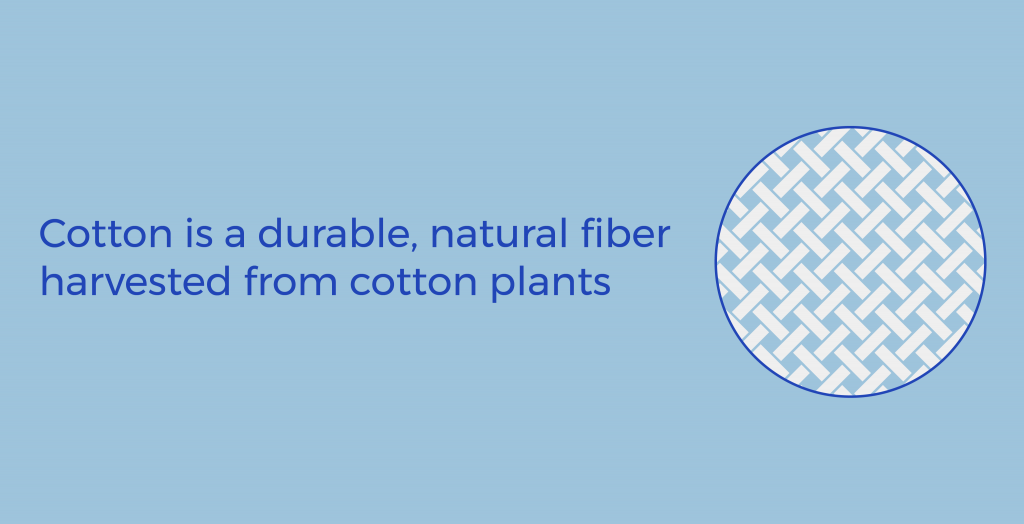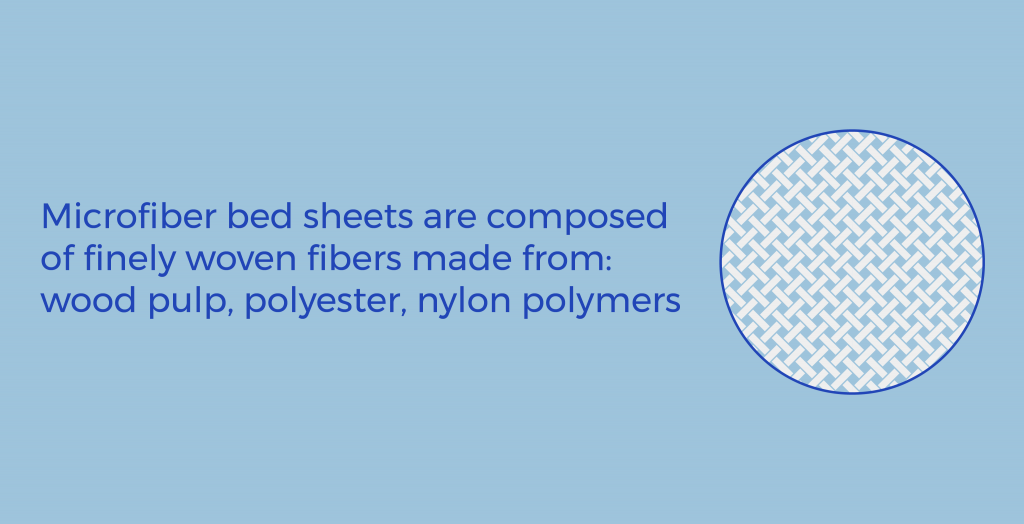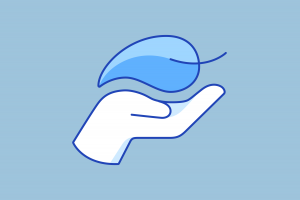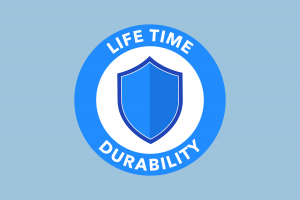What are Cotton Sheets?
Cotton is a durable, natural fiber harvested from cotton plants. Civilizations have harvested and used cotton for thousands of years and even today, it’s one of the most popular fabrics.
Although it may not seem like it, cotton is a very versatile material. Based on how the cotton is treated after being harvested, it can either feel soft or rough and be durable or weak.
The best cotton sheets generally have longer staples, meaning the cotton fibers are longer and finer, yet still durable. Having such fine cotton means the fabric turns out softer. Some examples of long-staple cotton sheets include Egyptian or Pima cotton. These types of sheets generally have higher thread counts, meaning there is more cotton per square inch of fabric.
Cheaper cotton sheets feature short staples and the most common type is Upland cotton. Short-staple sheets generally feel coarse, scratchy, and are at a higher risk of pilling. Shorter-staple cotton is less fine and has a lower thread count than long-staple cotton.
Aside from how long the fibers are, how the fabric is treated can also affect its durability. Organic and natural cotton sheets have a reputation for greater longevity, compared to fibers that have been chemically treated.

Pros of Cotton Sheets
- Available in countless varieties, both affordable and luxurious
- Natural fabric
- Good for people with allergies
- Low maintenance
- Durable
- Breathable and moisture-resistant
Cons of Cotton Sheets
- Potentially inflated thread counts
- Some variations are expensive
Best Cotton Sheets: AmigoZone Percale Cotton Sheets

Those looking for a durable and cooling set of sheets should check out the AmigoZone Sheet. These 300-thread-count, 100 percent cotton sheets feature a highly breathable percale weave that allows maximum airflow.
The percale weave follows a grid pattern that puts one-thread-under and one-thread-over. That creates a matte finish and a cool, crisp feel. Whereas sateen weave tends to feel more silky and soft. Percale weave allows for tons of air circulation. That means these cotton sheets help keep air flowing around your body even as they absorb moisture and wick it away.
The long-staple cotton fibers featured in these sheets also give them greater durability ands well as breathability. That means you can machine wash them on the gentle cycle without worrying about pilling or tearing. The great thing about cotton sheets is they get even softer every time you wash them!
Another wonderful feature of these sheets is their deep pockets. Many fitted sheets tend to slide around mattresses or even slide off them because they don’t wrap all the way down and around the bottom of the mattress.
However, deep-pocketed sheets hug your mattress, gripping the underside. Deep pockets are fantastic for all mattress thicknesses. However, they’re absolutely essential for deep mattresses. If your mattress is over 12 inches tall, you likely won’t be able to keep a sheet set with regular pockets on it.
The AmigoZone's cotton percale sheets have a quality feel similar to luxe hotel sheets, without the luxe hotel price. These sheets range from $110 to $180, depending on their size. They also come in four colors.
Recommended For:
- Hot sleepers
- Couples
- Active sleepers
Best Features:
- Deep pockets keep the fitted sheet in place.
- A percale weave maximizes cooling airflow.
- The long-fiber cotton is tough and soft at the same time.
What are Microfiber Sheets?
Microfiber bed sheets are composed of finely woven fibers made from wood pulp, polyester, or nylon polymers. They’re affordable and soft, yet they’re more durable than traditional polyester sheets. As a synthetic fabric, microfiber is less likely to wrinkle or shrink compared to all-natural fabrics like cotton.
Microfiber is measured by its denier, or each fiber’s thickness. A fabric’s denier must be less than 1 denier in diameter to be considered microfiber.
A microfiber sheets’ weave affects its durability and quality. Microfiber sheets with a flat weave are durable, resistant to stains, and repel moisture. Conversely, microfiber sheets with a waffle weave are highly absorbent and trap heat, which isn’t a reliable bed sheet.
Still, sleeping on microfiber is an all-around good choice if you want soft and smooth sheets, but don’t want to pay a high price. Good-quality microfiber sheets with a flat weave are good on a child’s bed in case of accidents.

Pros of Microfiber Sheets
- Low maintenance
- Flat, tightly woven microfiber is durable
- Soft and lightweight
Cons of Microfiber Sheets
- Absorbs moisture
- Prone to stains
- Staticky
- Traps heat
- Waffle-patterned microfiber is prone to moisture
How to Choose Between Cotton and Microfiber
Choosing between cotton or microfiber might be a bit difficult. We recommend weighing the pros and cons between both types of sheets, but also considering their feel, durability, maintenance needs, and price.
Feel and Comfort
 Cotton is known for its soft, fresh, and crisp feel, especially when you first start sleeping on a new sheet set. With every wash, cotton gets just a bit softer and softer. Based on the thread count of the cotton sheets, they’ll feel either softer or rougher. Higher thread counts typically feel softer, while lower thread counts feel rougher.
Cotton is known for its soft, fresh, and crisp feel, especially when you first start sleeping on a new sheet set. With every wash, cotton gets just a bit softer and softer. Based on the thread count of the cotton sheets, they’ll feel either softer or rougher. Higher thread counts typically feel softer, while lower thread counts feel rougher.
Microfiber has a smooth and slippery feel, similar to silk or satin. With this in mind, microfiber tends to trap more heat compared to cotton. The heat retention can be great if you live in a colder climate, or if it’s wintertime. Otherwise, it can get uncomfortable, particularly if you struggle with night sweats or a similar condition.
This difference can also come down mositure absorbence vs. pure moisture wicking properties. Cotton lets droplets seep inside, but it doesn’t feel wet due to the way the fibers trap moisture for later evaporation.
Microfiber is much less absorbent, leaving the moisture to move along the surface until it evaporates. However, if sweat and such gets trapped under a sleeper’s body, then this can create an uncomfortable puddle.
Durability
 Cotton sheets with high thread counts generally last much longer than cotton sheets with lower thread counts. Lower thread counts tend to pill more, making them less comfortable, so you’ll need to replace them sooner. On the other hand, higher quality cotton gets softer with each wash without causing the cotton to wear down.
Cotton sheets with high thread counts generally last much longer than cotton sheets with lower thread counts. Lower thread counts tend to pill more, making them less comfortable, so you’ll need to replace them sooner. On the other hand, higher quality cotton gets softer with each wash without causing the cotton to wear down.
Microfiber sheets with a flat weave fare better long-term than microfiber sheets with a waffle weave. They can withstand frequent washes without deteriorating or pilling. Flat weaves are also less likely to wrinkle or shrink when washed and dried.
Maintenance
 Both microfiber and cotton sheets are fairly easy to wash. Most of the time, both microfiber and cotton sheets are safe to toss in the washing machine and dryer on the warm water setting. Unless the sheets clearly state having other care needs, it’s safe to assume they’re machine washable. However, be sure to check the laundry care instructions first.
Both microfiber and cotton sheets are fairly easy to wash. Most of the time, both microfiber and cotton sheets are safe to toss in the washing machine and dryer on the warm water setting. Unless the sheets clearly state having other care needs, it’s safe to assume they’re machine washable. However, be sure to check the laundry care instructions first.
With this in mind, microfiber is more likely to feel staticky after being washed and dried. Microfiber with a waffle weave is also more likely to absorb moisture and it can be hard to remove stains. Some types of microfiber may also need to be washed on a low-temperature setting.
Price
 Microfiber sheets and cotton sheets are both available in a wide range of price points, with affordable and luxurious variations. Still, microfiber sheet sets are cheaper on average than cotton sheets since they are synthetic.
Microfiber sheets and cotton sheets are both available in a wide range of price points, with affordable and luxurious variations. Still, microfiber sheet sets are cheaper on average than cotton sheets since they are synthetic.
However, remember that a sound investment is about more than you just pay, it’s also about how long a product lasts. If you pay a lower price for the sheets but you have to replace them sooner, it may not be worth the cost.
